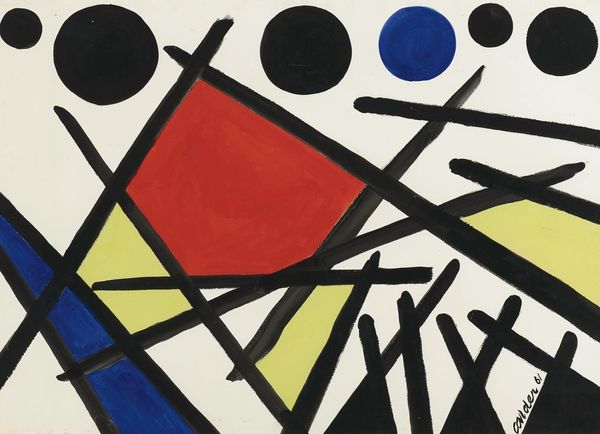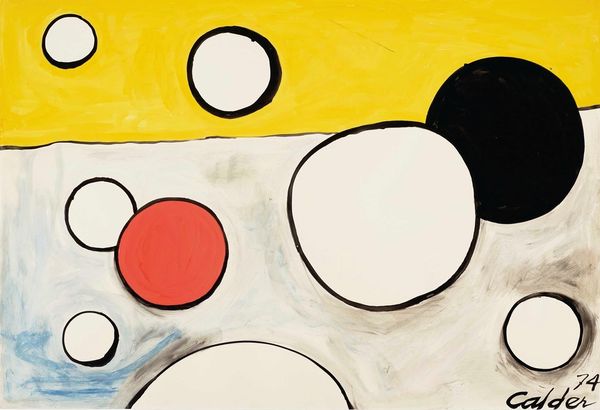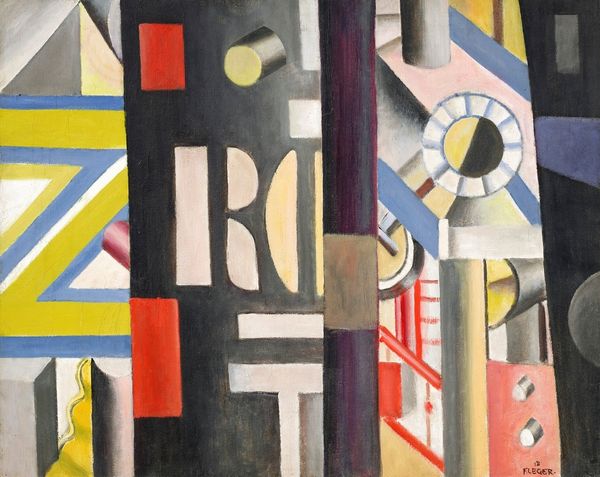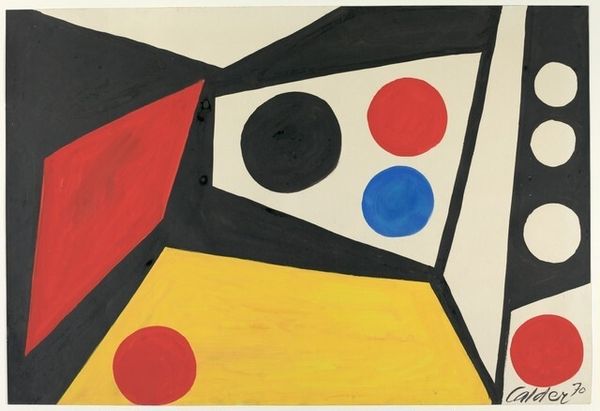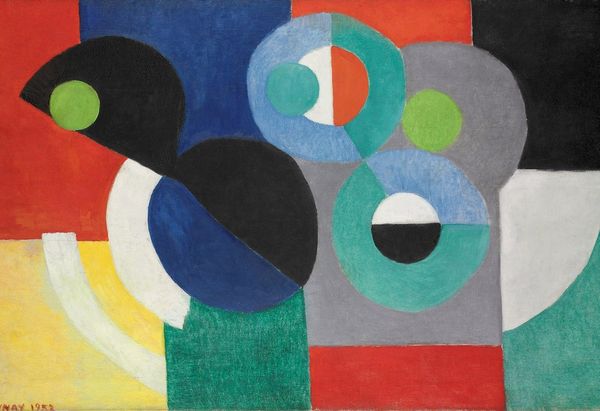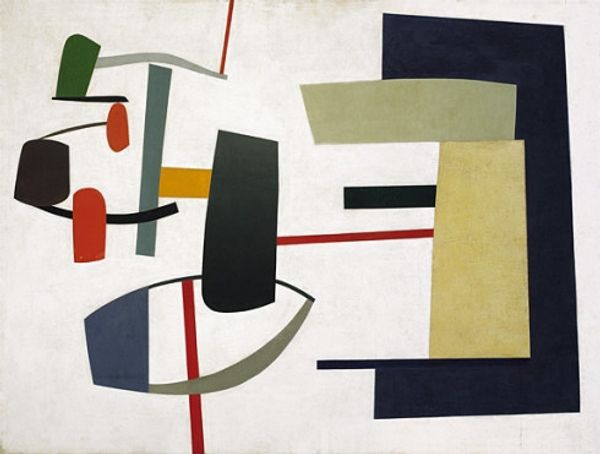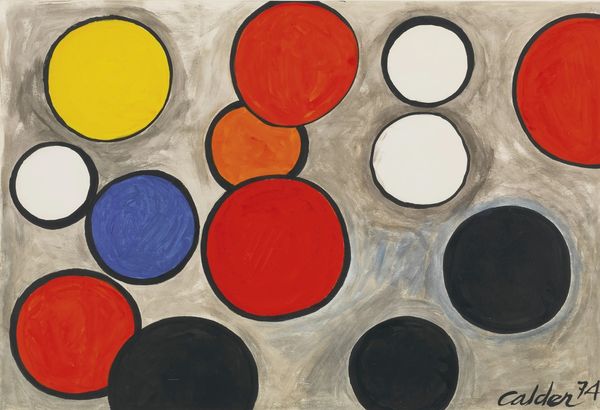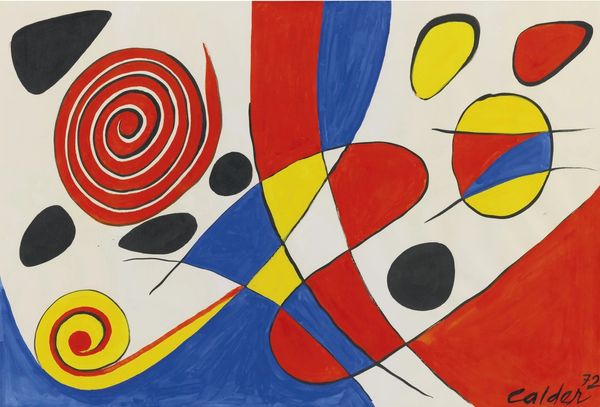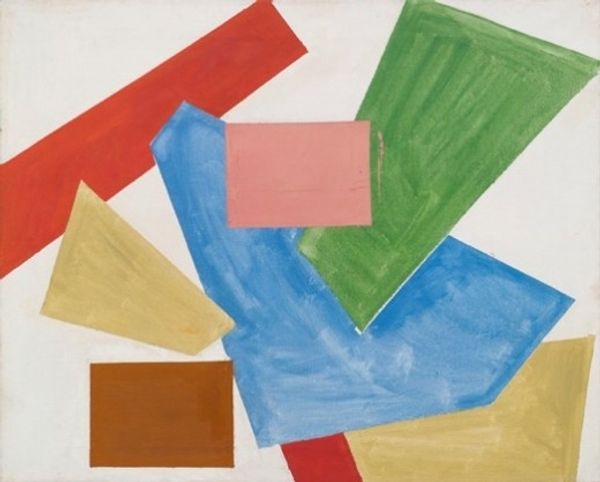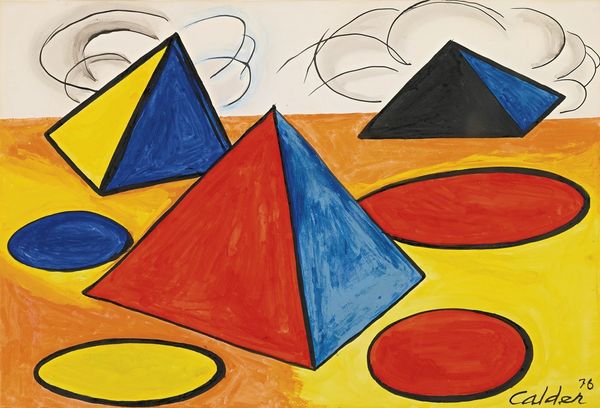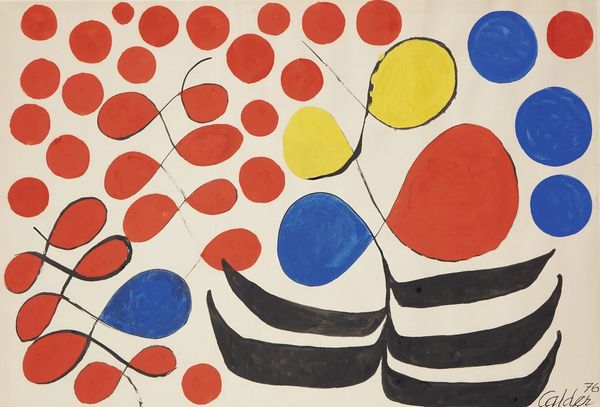
painting, acrylic-paint
#
painting
#
pop art
#
colour-field-painting
#
acrylic-paint
#
abstract
#
form
#
oil painting
#
acrylic on canvas
#
geometric
#
geometric-abstraction
#
modernism
Copyright: Modern Artists: Artvee
Editor: So, this is Alexander Calder’s "White Fields," painted in 1955 using acrylic paint. It strikes me as both playful and strangely unsettling. What do you see in this piece, particularly regarding his choice of materials? Curator: I see a fascinating exploration of industrial materiality. Calder, better known for his mobiles, here translates his engineering sensibilities onto canvas. The acrylic paint itself is key: a relatively new, mass-producible material in the '50s. It allowed for bold, flat colors and quick drying times, reflecting the efficiency of industrial production. Editor: That's a great point about the acrylic! I hadn't considered the link to industrial production. But doesn’t the apparent simplicity also suggest a kind of “art for the masses”? Curator: Precisely! Calder’s embrace of abstraction and these accessible materials moves away from traditional, high art notions. It democratizes art-making, implying that artistic creation can be within reach of everyday individuals through accessible processes and the work required. Consider the title – "White Fields." Is it just a descriptive label, or is it pointing towards the expansiveness and industrial agriculture transforming landscapes at the time? Editor: Hmm, so the "fields" could refer to a real, physical change driven by industry. I guess the limited color palette adds to the sense of mass production too. It’s all so intertwined! Curator: Indeed. Calder wasn't just creating pretty shapes; he was engaging with the evolving material culture of his time. It’s in understanding the what it's made of, how it’s made and how those material aspects connect with broader socio-economic changes that the artist really connects to the wider world. Editor: That’s a totally new perspective for me. Thanks for connecting the material with these wider issues. Curator: My pleasure. Examining an artwork's materials opens up a whole world of meaning and contextualizes labour and industry like little else.
Comments
No comments
Be the first to comment and join the conversation on the ultimate creative platform.
